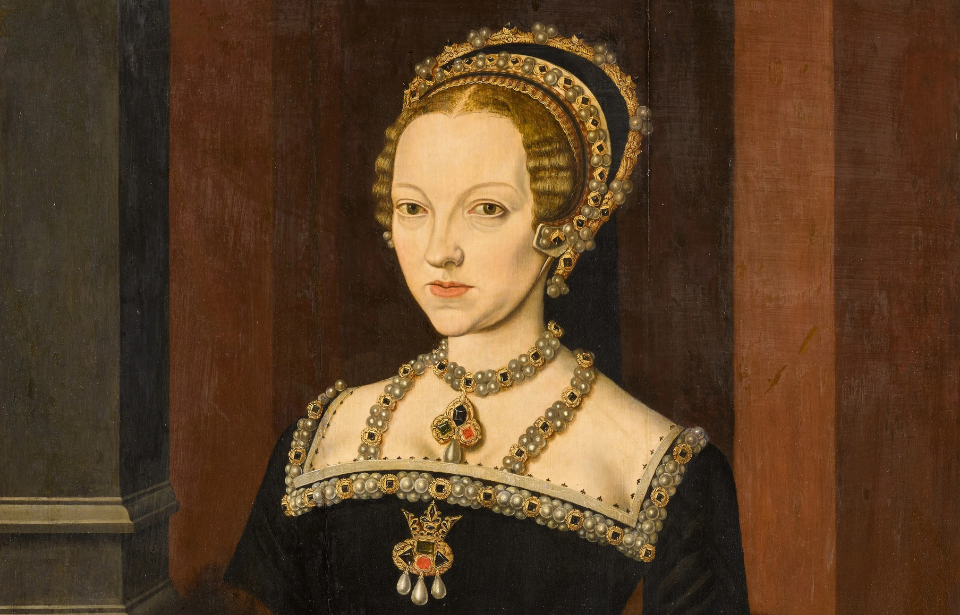Catherine Parr, the sixth and final wife of King Henry VIII, led a life that was nothing short of extraordinary. Born in 1512, she wasn’t only a queen, but also a scholar and a writer, and her intelligence and diplomatic skills were crucial in navigating the treacherous waters of the Tudor court. Parr’s influence extended beyond her role as a wife; she was a patron of the arts and an advocate for the education of women, making significant contributions to the cultural and intellectual landscape of her time.
After Henry’s death, she continued to play a significant role in the political and social spheres, marrying Thomas Seymour and becoming a stepmother to the future Queen Elizabeth I.
Catherine Parr’s early life
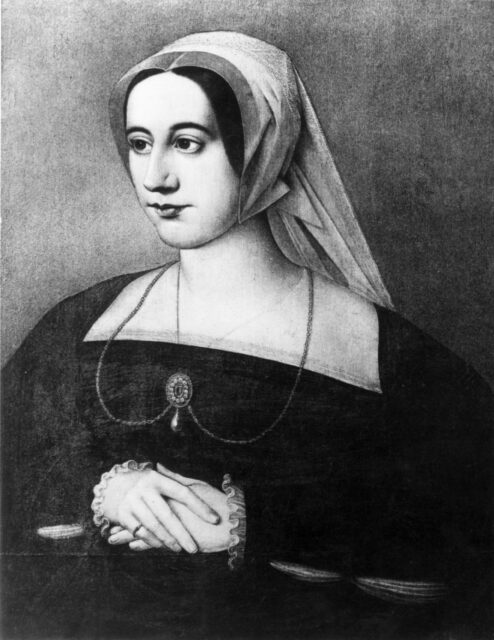
Catherine Parr was the daughter of Sir Thomas Parr, a prominent courtier, and Maud Green, a lady-in-waiting to Queen Catherine of Aragon. This connection to the royal court provided the young Parr with a unique upbringing that saw her surrounded by the political and social intricacies of Tudor England.
Her education was comprehensive, encompassing languages, literature and the arts, which was quite progressive for a woman of her time. These early experiences and her family’s status undoubtedly shaped her intellect and poise, qualities that later defined her role as Queen Consort.
Growing up in such an environment, Parr was well-acquainted with the expectations and responsibilities of the nobility. Her early exposure to courtly life and her family’s connections afforded her opportunities to observe and learn from influential figures. This background not only prepared her for her future roles, but also instilled in her a sense of duty and resilience.
Who was Catherine Parr married to prior to King Henry VIII?
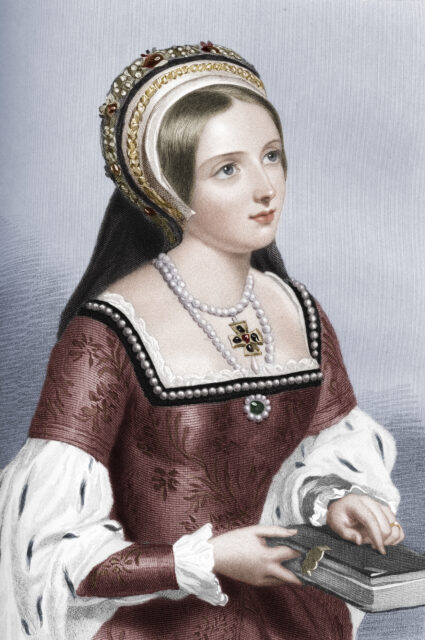
Before her marriage to Henry VIII, Catherine Parr was a wife twice over. Her first marriage was to Sir Edward Burgh, a union that took place in 1529. Unfortunately, their marriage was short-lived, due to Burgh’s untimely death in 1533. Despite the brevity of their time together, Parr’s role as a young widow provided her with valuable experience in managing estates and navigating the complexities of noble life.
Following Burgh’s death, Parr married John Neville, 3rd Baron Latimer. This brought her into the turbulent world of northern English politics during the Pilgrimage of Grace, a major uprising against Henry VIII’s religious reforms. As Lady Latimer, Parr demonstrated her resilience and diplomatic skills, qualities that would later serve her well as Queen Consort.
The death of her second husband in 1543 left Parr a widow once more, but it also positioned her as a wealthy and influential woman, eventually catching the eye of the king himself.
Becoming the sixth wife of Henry VIII
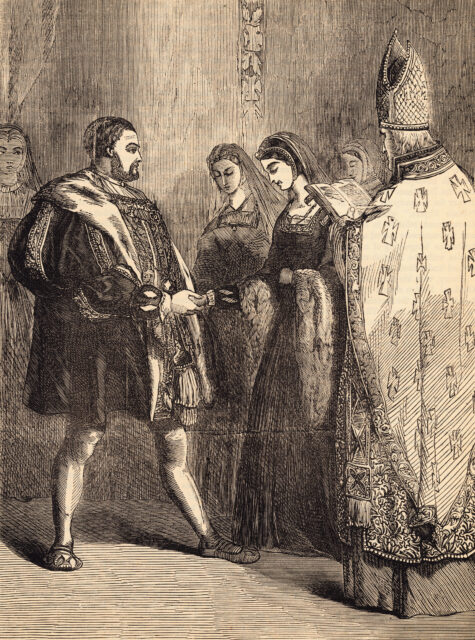
The fact Catherine Parr was twice widowed was quite unusual for a woman of her time. Her previous marriages had endowed her with a wealth of experience and a keen understanding of courtly life.
When she caught the eye of Henry VIII, Parr was initially hesitant, aware of the fate that had befallen the royal’s previous wives. However, her sense of duty and perhaps a strategic understanding of the benefits that could come from such a union led her to accept his proposal.
Once married, Parr quickly proved herself to be a stabilizing force in Henry’s tumultuous court. She wasn’t only a devoted wife, but also a stepmother to his three children, Mary, Elizabeth and Edward, playing a role in their education and upbringing. Her influence also extended beyond the domestic sphere; she was a patron of the arts and an advocate for religious reform.
Catherine Parr’s role as Queen Consort
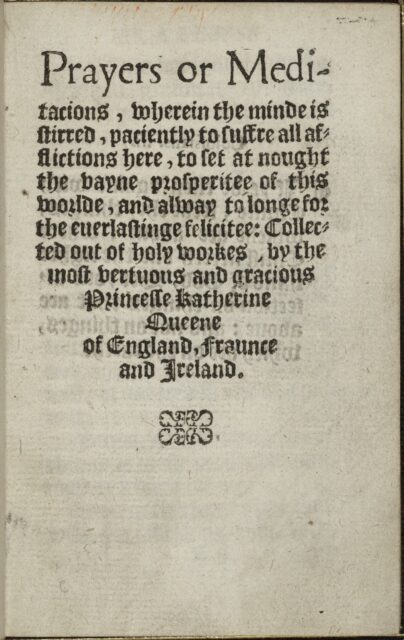
Catherine Parr played a significant role as Queen Consort. Her tenure was marked by her intelligence and diplomatic skills, and she worked diligently to unite the royal family, fostering a sense of harmony and stability that had been absent for many years. Her influence on the future monarchs, particularly Elizabeth I, was profound, as she encouraged their education and intellectual growth.
In addition to her familial duties, Parr also authored several books, making her the first queen of England to publish under her own name. Her writings reflected her commitment to the Protestant faith and her desire to see the Church of England flourish.
Catherine Parr’s influence on religion and education
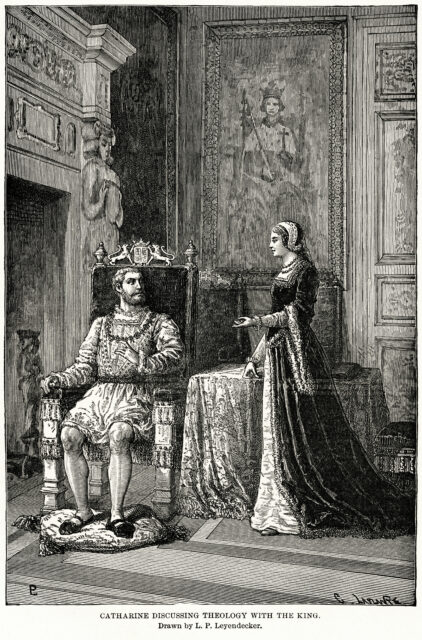
Catherine Parr’s played a key role in the religious transformation of England. Her strong Protestant beliefs helped to solidify the Reformation, and she was instrumental in promoting the translation of the Bible into English, making religious texts more accessible to the general populace. This move not only democratized religious knowledge, but also encouraged literacy among the masses, as more people sought to read the scriptures for themselves.
Moreover, Parr was a passionate advocate for education, particularly for women. She herself was highly educated and believed in the power of learning. Under her guidance, the royal court became a center for scholarly pursuits, attracting intellectuals and fostering an environment where education was highly valued. Her efforts led to the education of future queens and noblewomen, thereby setting a precedent for the importance of female education in England.
Catherine Parr faced many challenges
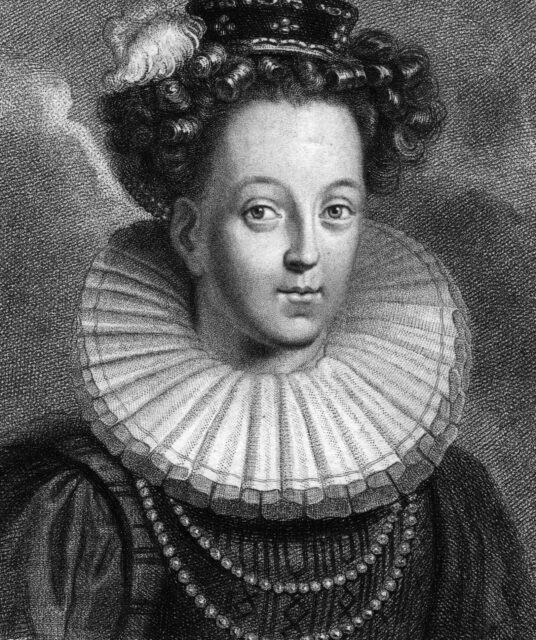
For all of her contributions, Catherine Parr faced numerous challenges. One of the most significant hurdles was navigating the treacherous political landscape of the Tudor court. With factions frequently vying for power and influence, she needed to be exceptionally astute and diplomatic. Parr’s ability to maintain favor with King Henry VIII while advocating for religious reform showcased her remarkable political acumen.
Additionally, Parr had to contend with the personal difficulties of being married to a notoriously unpredictable monarch. Henry’s health was deteriorating, and his mood swings were legendary, making life a constant challenge; her role extended beyond that of a wife, as she acted as a nurse and caretaker, managing his ailments with patience and care.
Catherine Parr’s life after King Henry VIII
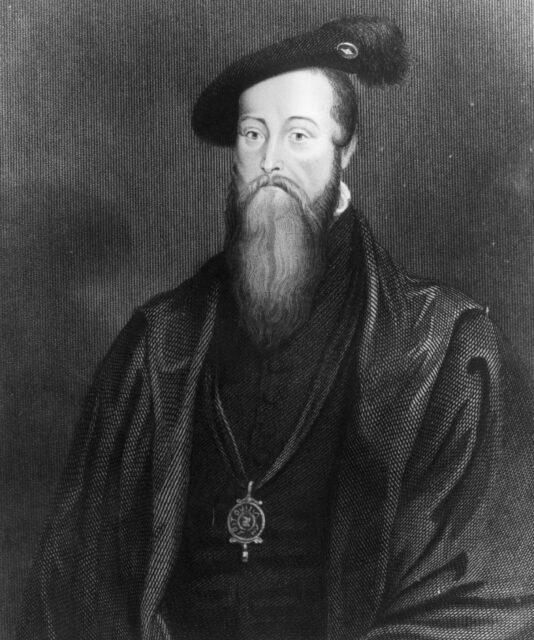
After the death of Henry VIII in 1547, Catherine Parr found herself in a unique position as the Dowager Queen. Her intellect and charm had always set her apart, and she continued to play a significant role in the royal court. Her marriage to Thomas Seymour, the brother of Jane Seymour, Henry’s third wife, wasn’t unexpected, as he’d originally proposed to her around the same time as King Henry VIII, whom she ultimately couldn’t say no to.
Even still, her influence extended beyond her marriage to Seymour. Parr’s ability to balance personal ambition with a genuine desire to contribute to the greater good made her a remarkable figure in English history.
Leaving behind a strong legacy
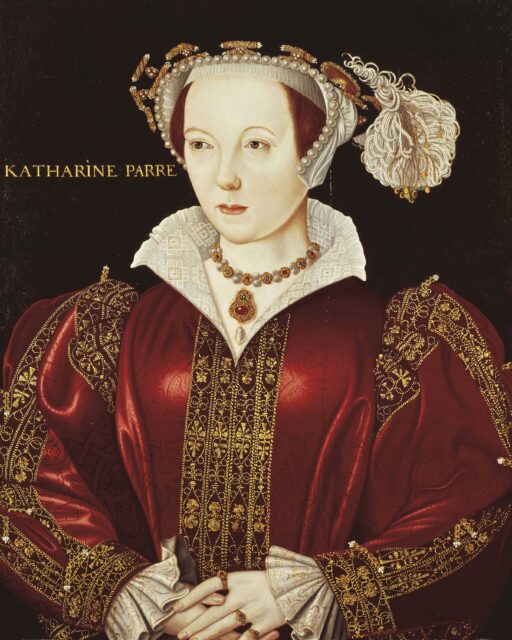
Catherine Parr’s legacy extends far beyond her role as the last wife of King Henry VIII. Her influence on the English Reformation and her patronage of the arts and education left a lasting impact. Notably, she was the first queen to publish a book under her own name, with her works, including Prayers or Meditations and The Lamentation of a Sinner, showing her religious convictions and intellectual prowess, contributing to the spread of Protestant ideas.
More from us: Lady Jane Grey Is England’s Tragic “Nine Days’ Queen”
Want to become a trivia master? Sign up for our Today In History newsletter!
Parr also played a crucial role in reconciling Henry with his daughters, Mary and Elizabeth, ensuring their places in the line of succession. Her nurturing relationship with Elizabeth, in particular, helped shape the future queen’s education and outlook. Catherine’s legacy is thus multifaceted, encompassing her contributions to religion, literature, and the stability of the Tudor dynasty.
